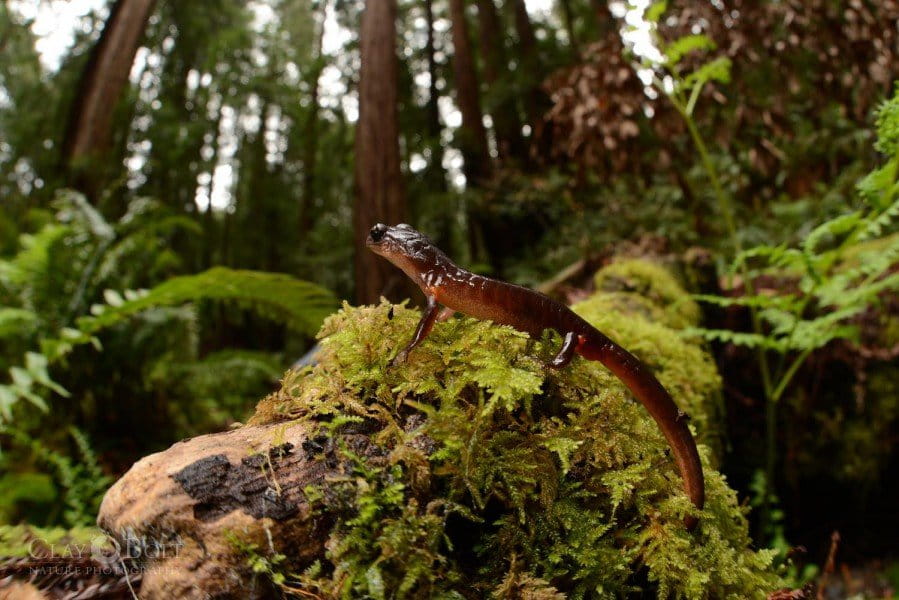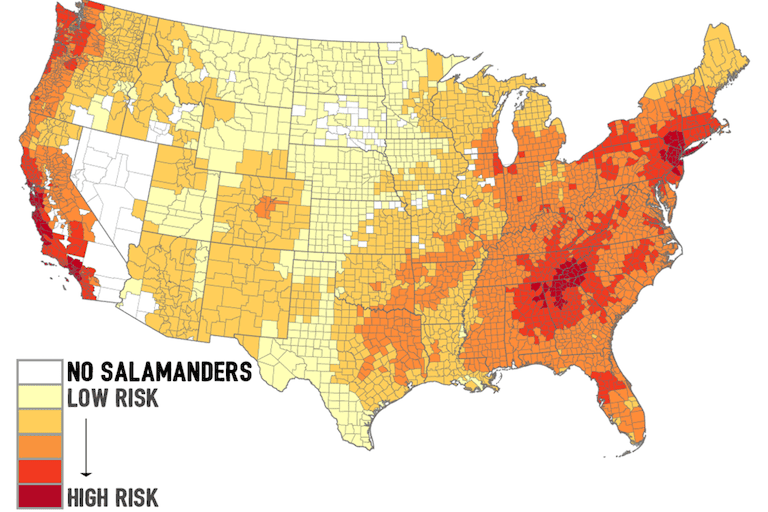- The U.S. is home to the world’s greatest diversity of salamanders, so experts are worried about another pandemic that is headed for the country, one that has salamanders in its sights.
- On this episode of the podcast we speak with a wildlife disease ecologist with U.S. Geological Survey, Daniel Grear, and with reporter Benji Jones about the programs that are pooling resources to search for any appearance of the dangerous fungus, called Bsal.
- This is a huge task that Jones describes as “searching for a needle in a haystack except the needle is invisible and the hay stretches for thousands of miles.”
- Grear shares how testing efforts are focused on areas of the U.S. that have the greatest concentration and biodiversity of salamanders, and that 11,000 tests have already been recorded, all negative, though experts like him believe it’s just a matter of time before the fungus makes landfall in North America.
Reporter Benji Jones and wildlife disease ecologist with United States Geological Survey, Daniel Grear, join this special edition of Mongabay’s podcast to discuss the hunt for Batrachochytrium salamandrivorans (Bsal) in North America, which Benji has described as “searching for a needle in a haystack except the needle is invisible and the hay stretches for thousands of miles.” Host Mike DiGirolamo talks with Jones and Grear about the search, the difficulty in finding it, and what we can expect if the disease ever makes its way to U.S. shores.
Listen here:
For the next several episodes of the podcast, Mongabay Explores will dive into a special publishing project our writers and editors produced on Bsal, to learn what’s known about this issue in 2020.

More reading from Mongabay on this topic:
- On the hunt for a silent salamander-killer
Scientists are racing to stop a pandemic before it starts – but will they find it in time? - Super-spreaders: How the curious life of a newt could ignite a pandemic
Their susceptibility to Bsal coupled with their mobility mean eastern newts could act as “super-spreaders” of Bsal if the fungus gets to North America. - U.S.G.S.’s National Wildlife Health Center’s Bsal Surveillance site
- View Mongabay’s whole series on Bsal here
- United States Bsal Task Force website

If you enjoy Mongabay’s podcasts, we ask that you please consider becoming a monthly sponsor via our Patreon page, at patreon.com/mongabay. Just a dollar or more per month helps us offset production costs and hosting fees, and can help us create special series like Mongabay Explores.
Subscribe to all of Mongabay’s podcasts for free on Apple channels. You can subscribe to Mongabay Explores on Spotify, Apple, Google, or wherever you get podcasts. Listen to all of the Mongabay Explores podcast episodes via the Mongabay website here.
If you missed episode 1 of this series, listen to our conversation with Dr. Karen Lips, “Are we ready?” here:
Episode 2 discussed the huge salamander diversity in North America, and the U.S. in particular, and explored reasons for this great richness:
A new episode of “Mongabay Explores” is published every two weeks.
Banner image: A spotted salamander (Ambystoma maculatum). Photo courtesy of Missouri Department of Conservation.
